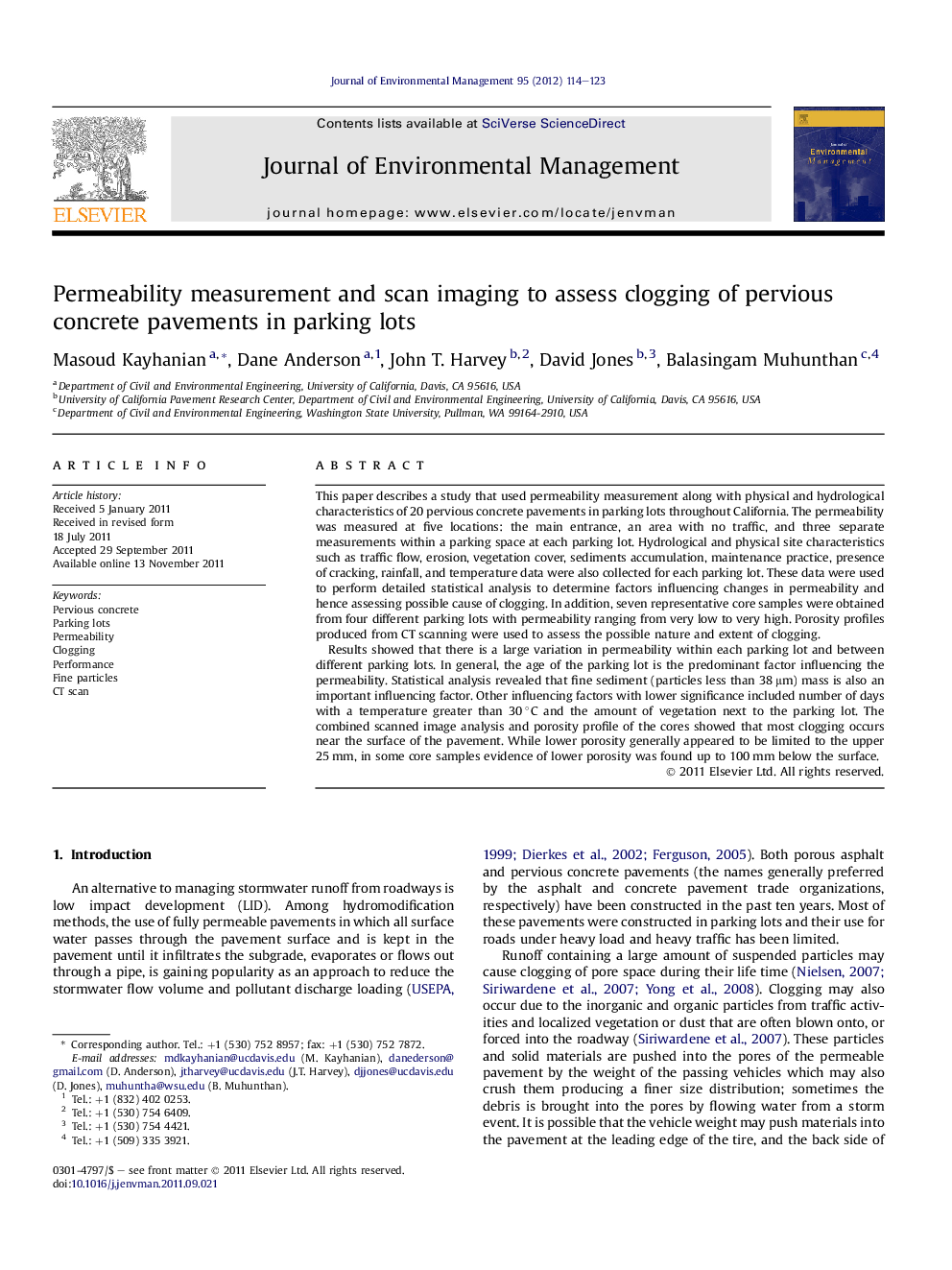| Article ID | Journal | Published Year | Pages | File Type |
|---|---|---|---|---|
| 1056925 | Journal of Environmental Management | 2012 | 10 Pages |
This paper describes a study that used permeability measurement along with physical and hydrological characteristics of 20 pervious concrete pavements in parking lots throughout California. The permeability was measured at five locations: the main entrance, an area with no traffic, and three separate measurements within a parking space at each parking lot. Hydrological and physical site characteristics such as traffic flow, erosion, vegetation cover, sediments accumulation, maintenance practice, presence of cracking, rainfall, and temperature data were also collected for each parking lot. These data were used to perform detailed statistical analysis to determine factors influencing changes in permeability and hence assessing possible cause of clogging. In addition, seven representative core samples were obtained from four different parking lots with permeability ranging from very low to very high. Porosity profiles produced from CT scanning were used to assess the possible nature and extent of clogging.Results showed that there is a large variation in permeability within each parking lot and between different parking lots. In general, the age of the parking lot is the predominant factor influencing the permeability. Statistical analysis revealed that fine sediment (particles less than 38 μm) mass is also an important influencing factor. Other influencing factors with lower significance included number of days with a temperature greater than 30 °C and the amount of vegetation next to the parking lot. The combined scanned image analysis and porosity profile of the cores showed that most clogging occurs near the surface of the pavement. While lower porosity generally appeared to be limited to the upper 25 mm, in some core samples evidence of lower porosity was found up to 100 mm below the surface.
► Twenty pervious parking lots were used to investigate possible clogging. ► Hydraulic conductivity within each parking lot was substantially different. ► Hydraulic conductivity of older parking lots was lower than newer parking lots. ► Two dominant factors influencing the hydraulic conductivity were pavement age and particles <38 μm. ► Scan image showed that the porosity of the top 25 mm was generally lower and may be the cause of clogging.
